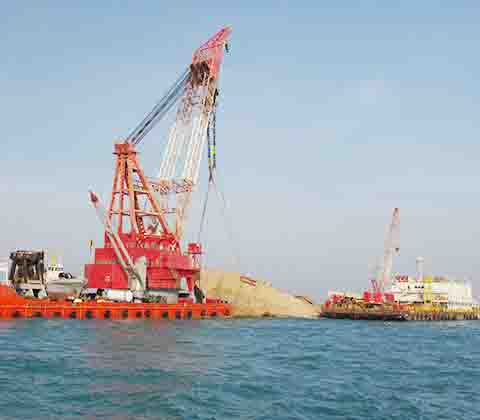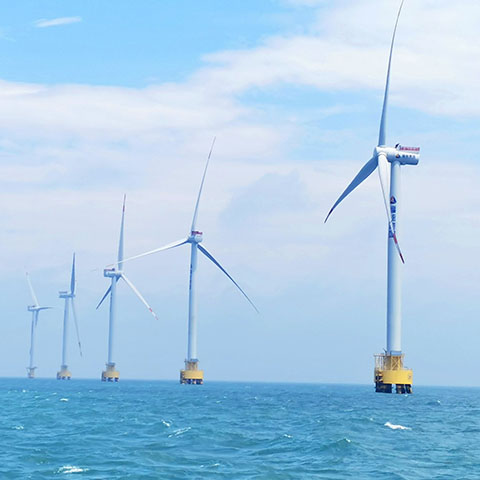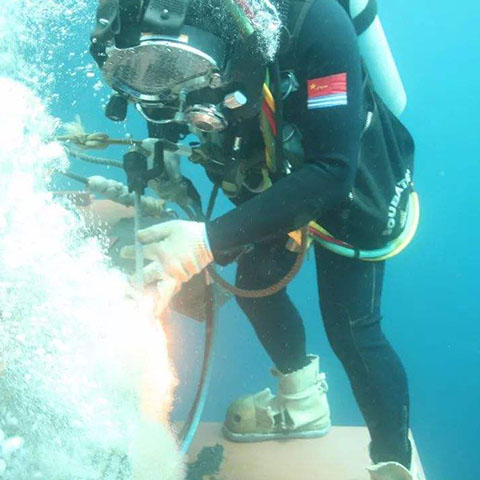Offshore wind power
Wind power generation is the fastest-growing green energy technology in the world. With the rapid development of land-based wind farm construction, people have noticed some restrictions on the use of land-based wind energy, such as large land area, noise pollution and so on. Due to the abundant offshore wind energy resources and the feasibility of today's technology, the ocean will become a rapidly developing wind power market. European and American offshore wind farms are on the eve of large-scale development. The east coast of China has a vast sea area with a water depth of less than 50 m, and is very close to the power load center (the economically developed coastal power shortage area). With the development of offshore wind farm technology, wind power will become an important energy source for the sustainable development of the East Coast of China.
Fan support technology
The support technology of offshore wind turbine mainly includes bottom fixed support and suspension support.
Bottom fixed support
There are three types of fixed support at the bottom: Gravity Caisson Foundation, single pile foundation and tripod foundation.
(1) Gravity Caisson Foundation.
The Gravity Caisson mainly relies on its own mass to make the fan stand on the sea. Vindeby and tunoeknob offshore wind farm foundations use this traditional technology. At the wharf near the wind farm, the caisson foundation is built with reinforced concrete, floated to the installation position, filled with sand to obtain the necessary quality, and then sunk into the seabed. The foundation on the sea surface is conical, which can reduce the impact of floating ice on the sea. The water depth of vindeby and tunoe knob wind farms ranges from 2.5 to 7.5m, and the average mass of each concrete foundation is 1050t. The technology has been further developed. The reinforced concrete is replaced by cylindrical steel tubes, which are embedded into the flat steel boxes on the seabed. The technology is applicable to shallow sea areas with water depth less than 10m.
(2) Single pile foundation. The single pile foundation is composed of a steel pile with a diameter of 3 ~ 4.5m. Steel piles are installed at 18 ~ 25m under the seabed, and their depth is determined by the type of seabed ground. The single pile foundation effectively extends the wind tower into the underwater and seabed. One of the advantages of this foundation is that there is no need to clean up the seabed. However, it needs to prevent the current from scouring the seabed, and it is not applicable to the location with boulders in the seabed. The application range of this technology is less than 25m.
(3) Tripod foundation. The tripod foundation absorbs some experience from offshore oil and gas industry and adopts tripod steel casing with light weight and low price. The steel piles under the wind tower are distributed with some steel frames, which bear and transmit the load from the tower body. These three steel piles are buried 10 ~ 20m under the seabed.
Suspended support
There are two types of suspended supports, pontoon type and semi immersed type, which are mainly used in the range of 75 ~ 500m water depth.
(1) Pontoon support. The pontoon foundation is fixed on the sea surface by 8 cables connected with the seabed mooring anchor, and the wind turbine tower is connected with the pontoon through bolts.
(2) Semi immersed support. The main supporting structure is immersed in water and connected with the anchor ingot on the seabed through cables. This form is less disturbed by waves and can support a large fan of 3 ~ 6MW with a rotor diameter of 80m.
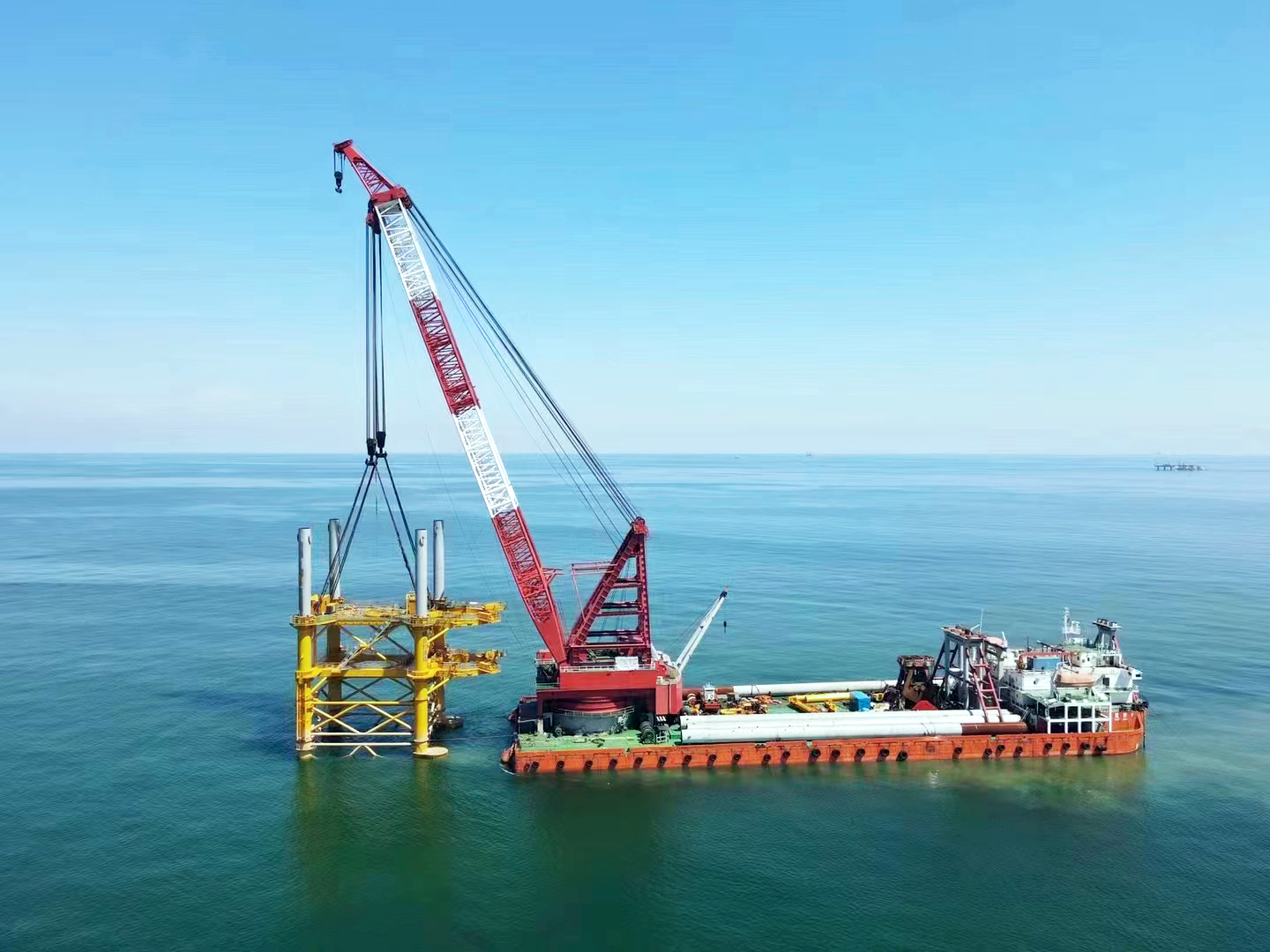
Technical features
The offshore wind turbine is developed on the basis of the existing land wind turbine to adapt to the offshore wind environment.
High tip speed
Land fans are optimized to reduce noise, while offshore fans are optimized to give greater play to aerodynamic benefits. High wing tip speed and small blade area will bring some favorable changes in the design of the fan structure and transmission system.
Pitch speed operation
The design of high wing tip speed blade can increase the initial working wind speed of the fan and bring large aerodynamic loss. The variable blade speed design technology can solve this problem. It can make the fan work at the maximum speed near the rated speed.
Reduce the number of blades
Most fans adopt a 3-Blade design, which causes noise and visual pollution. Using 2-Blade design will bring aerodynamic loss, but it can reduce the manufacturing and installation costs, so it is also a research direction.
New high efficiency generator
Develop simple and efficient generators, such as direct drive synchronous ring generator, direct drive permanent magnet generator, wire wound high voltage generator, etc.
Other components of wind turbine in marine environment
In the marine environment, the anti-corrosion of fan components to seawater and high tide wet climate shall be considered; Lifting equipment is provided in the tower to meet the maintenance needs; Transformers and other electrical equipment can be placed in the upper pod or on the lower platform at a certain height from the sea; The control system shall have onshore reset and restart functions; The standby power supply is used to set the fan at the safe stop position under special circumstances.

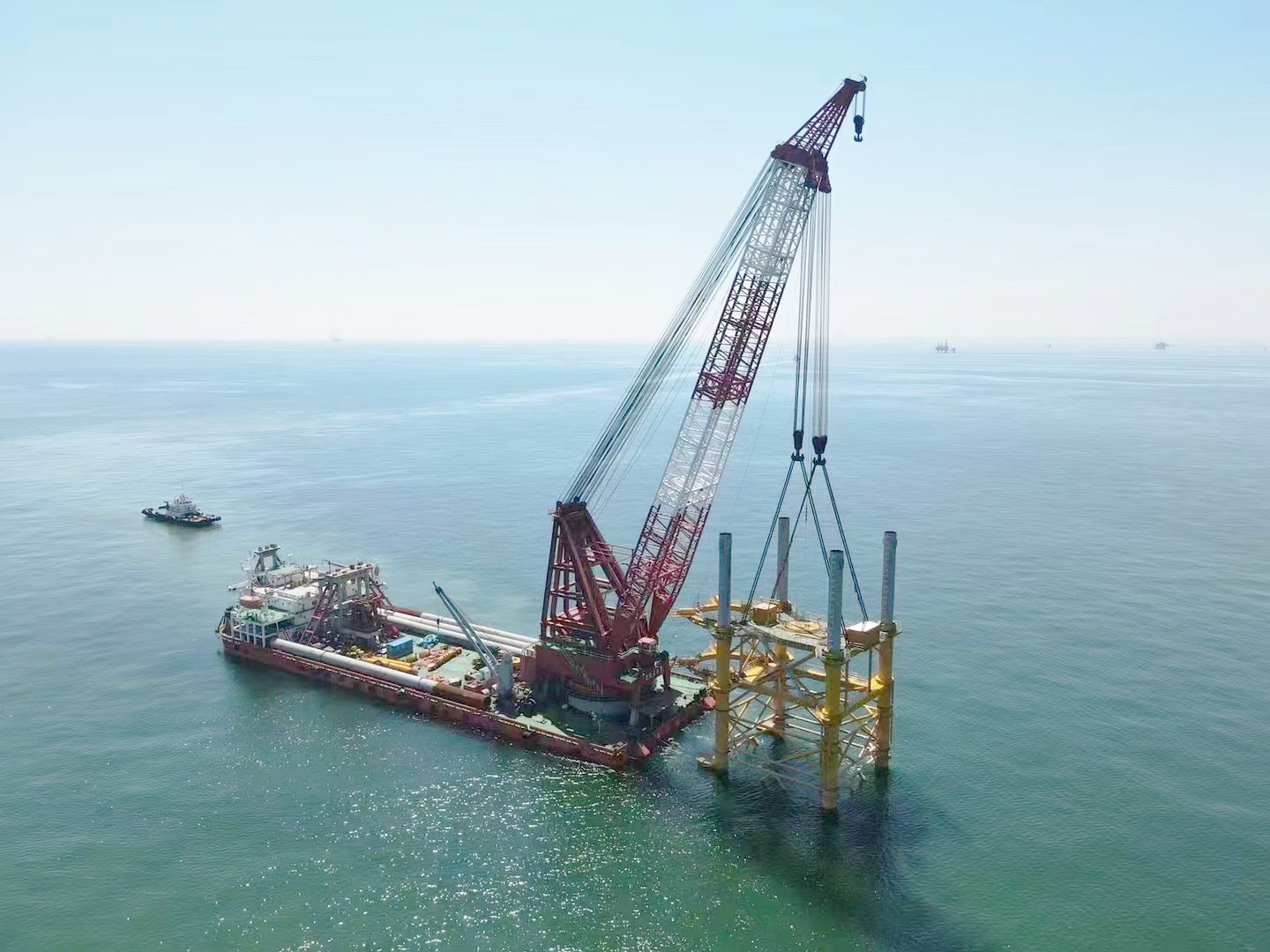

- Last:Nothing;
- Next:Nothing;
-
Environmental requirements for u [2022-05-16]
Underwater cutting is another underwater project. With the rapid development of economy, underwater cutting is more and more widely used. What are the environmental requirements of underwater cutting?
-
Precautions for underwater cutti [2022-05-16]
(1) Investigate the landscape image, water depth, water temperature, flow rate and other environment of the operation area. It can be operated only when the wind force on the water surface is less tha
-
Discussion on salvage method of [2022-05-16]
Sunken ship salvage in underwater salvage: six different methods can be adopted according to the size of sunken ship and the specific location of the event. However, various methods can be used alone,



